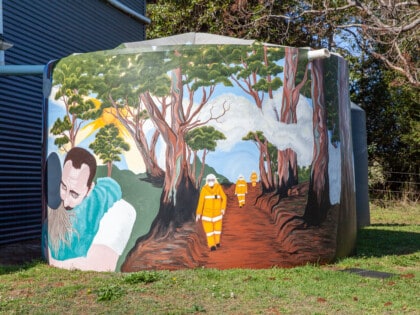News & Events


When it comes to building resilient communities, the answers lie within communities themselves
Kerry Jones shares some of the ways The Australian Centre for Social Innovation (TACSI) is helping communities drive the change that’s needed to build resilience and regeneration.
As our rural and regional communities face increasingly complex challenges, helping them foster resilience so they can pave new ways to lead, imagine, connect and invest in their own future has never been so important.
Many communities find themselves in positions where they don’t feel like they’re in control of owning and leading their futures. In the wake of the pandemic and devastating bushfires, pre-existing and new trauma is compounding at an alarming rate – but it doesn’t have to be this way.
Communities need to be able to adapt to these various challenges
The issue that most communities face is that the people tasked with solving these challenges tend to use traditional problem-solving methods that ignore the root of these challenges, and fail to listen to the stories that have borne witness to these challenges.
The communities where we see the most difference are those where people are able to acknowledge those challenges and share stories about the different types of trauma, and then find the strength to move through.
For communities to be adaptive, they need to be resilient
When people look at resilience, they tend to focus on the gaps: “Oh, you have to be more resilient. What’s not resilient? We have to fix what’s not resilient.”
Whereas if you go in with a strength-based mindset and ask, “What is strong here? What’s there wanting to grow, but it’s just not had the chance to do so? Where can new connections happen?”, all those gaps and vulnerabilities get addressed in that process without having to hone in on them.
We’re helping communities become more resilient with a strength-based, community-owned approach
A strength-based approach means people who wouldn’t normally see themselves in these kinds of roles recognise that they’ve actually got something to contribute. Our Town is a great example of this, where communities are celebrating what’s strong and building off of that, so they get momentum, they get energy, they get progress.
The Regional Innovators Network (RIN) is another example, where the focus is empowering communities to build their own capability, instead of relying on fly-in-fly-out social innovators.
The stronger the connections and diversity between people within the community, the more resilient the community will be when facing climate challenges like a fire or a flood.
Community-owned means everything is planned, defined, designed, implemented and decided at a community level.
Bolstering resilience can’t be done from the outside in. It must be driven by the community. Resilience is about community connections, open conversations and people seeing that they have the power to create the kinds of communities they want to live in.
Resilient communities are grown and nurtured over time. Work supporting communities to grow their resilience must move at the pace of community, and focus on bolstering strengths, connections and momentum. It is about walking alongside towns and building capacity so that towns can lead the change they want to see.
Resilient communities have the skills to have tough conversations. They are places where people are safe to be themselves, and where healing from trauma – at both an individual and at a community level – is supported.
Resilient communities are finding ways to connect around a shared vision for the future, one that incorporates different generations and bridges racial, generational and old/new divides. These dives may still exist but communities are finding shared ground amongst these.
Our Town was initiated as community-led, and this year it’s really shifted into being community driven and hopefully soon, community-owned. We’ve learned that If we take action without truly being led by the community, it always goes wrong.
This article was first published by TACSI. To continue reading, you can access the full article on their website.
LISTEN to Kerry Jones on the Creative Responders podcast
SUBMIT YOUR CASE STUDY



